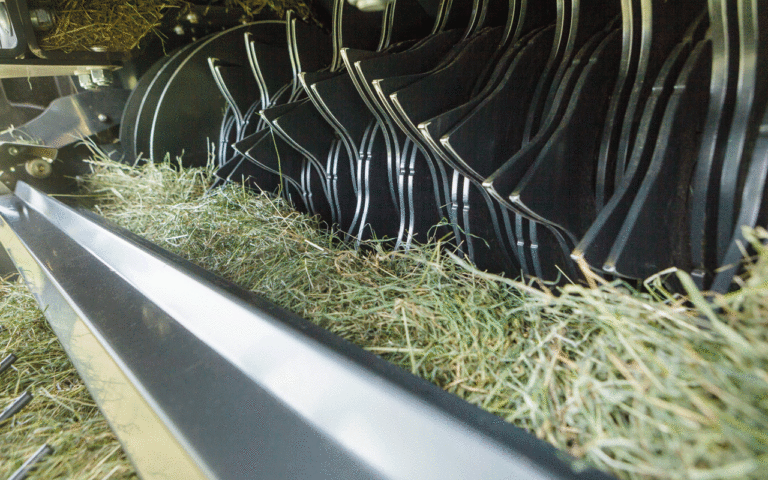A lot of the development around large square balers have been focused on density. This is key for straw baling, as you want to maximise the amount of product in the bale, especially when straw is being sold off farm by the lorry load.
This is less of a concern for silage, which is already substantially heavier than straw, but in drier grass crops, the benefits transfer. And if the forage is being used on your own farm, then fewer, densely packed bales can make a significant difference to the logistics of transporting them back to the yard.
And moving to high-density machines means the components have been uprated. By being able to handle the increased pressures of a high-density straw bale, these machines can easily manage grass crops, with fewer concerns over maintenance and downtime.
Novel features have been added to certain machines to make the process easier as well. This can be combinations of tractor and baler from the same brand, working together to minimise the rocking motion associated with balers. There are also neat guidance systems which can monitor the swath to keep the pick-up at capacity.
As with many operations, Isobus plays a key role here, including tractor implement management, which takes the onus off the operator by having the baler adjust the tractor’s forward speed. Unlike with round baling, where the machine still has to stop frequently, the near non-stop process of square baling means the operator can focus on other aspects of the job.
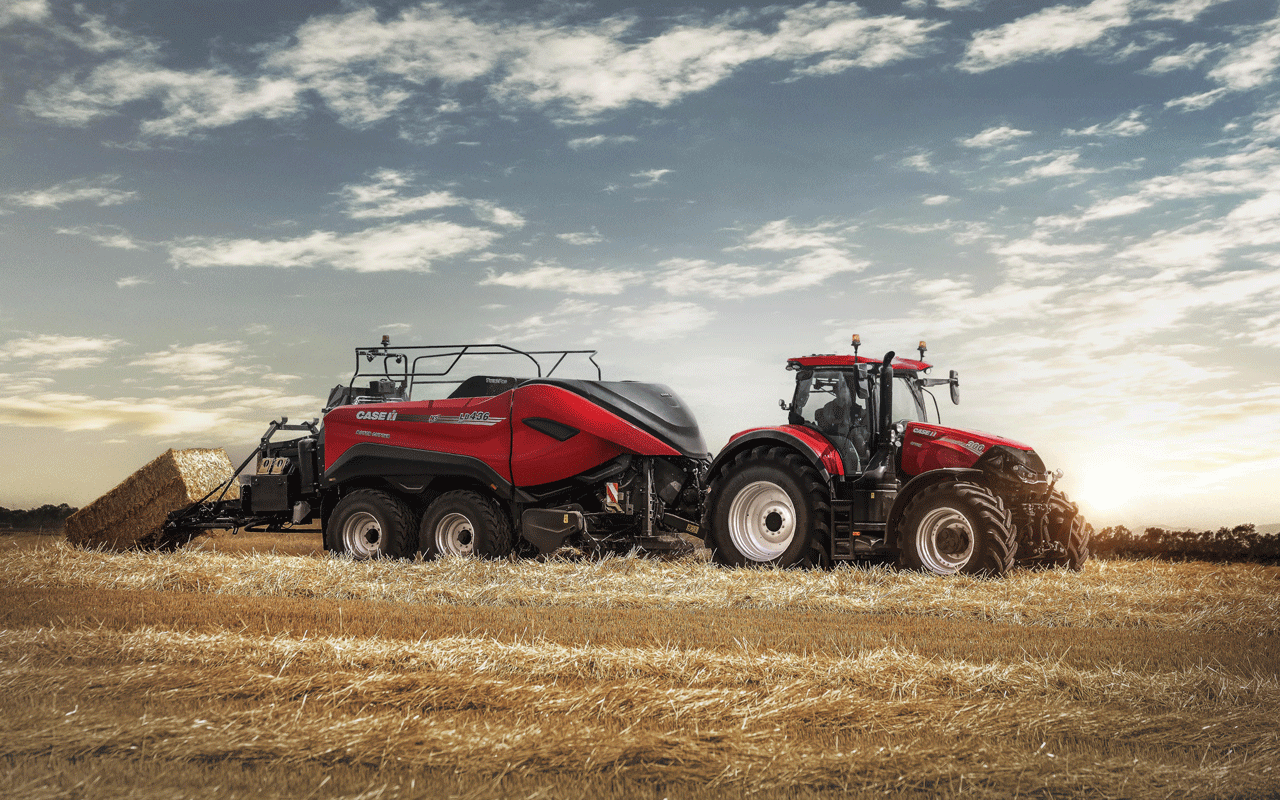
Case IH
The Case IH range comprises the LB36 HD, designed for large farms and contractor operations, and the high-density LB4 XL and LB4 XLD.
Recent upgrades to the LB36 HD include a load-sensing system that lets operators use the baler monitor or tractor Isobus terminal to control operations usually activated at the baler’s rear, including full or partial bale ejection and opening and closing the bale chute.
Operators can also lock the tandem-axle steering from the terminal, which automatically locks the rear steering axle when reversing or in road mode.
According to the company, the baler can achieve outputs of more than 40t/hour and is constructed with a heavy-duty plunger and bale chamber to enable bale weights of 500kg in all crops.
The LB4 XLD series (120x70cm bales) has durable components which are designed to produce extra-dense bales.
This is an ideal baler for those who want to maximise density while optimising logistic costs. It also has the option of sensor-based automation using a LiDAR sensor mounted on the cab. This enables the windrows to be followed automatically by the tractor, even at night, delivering hands-free operation.
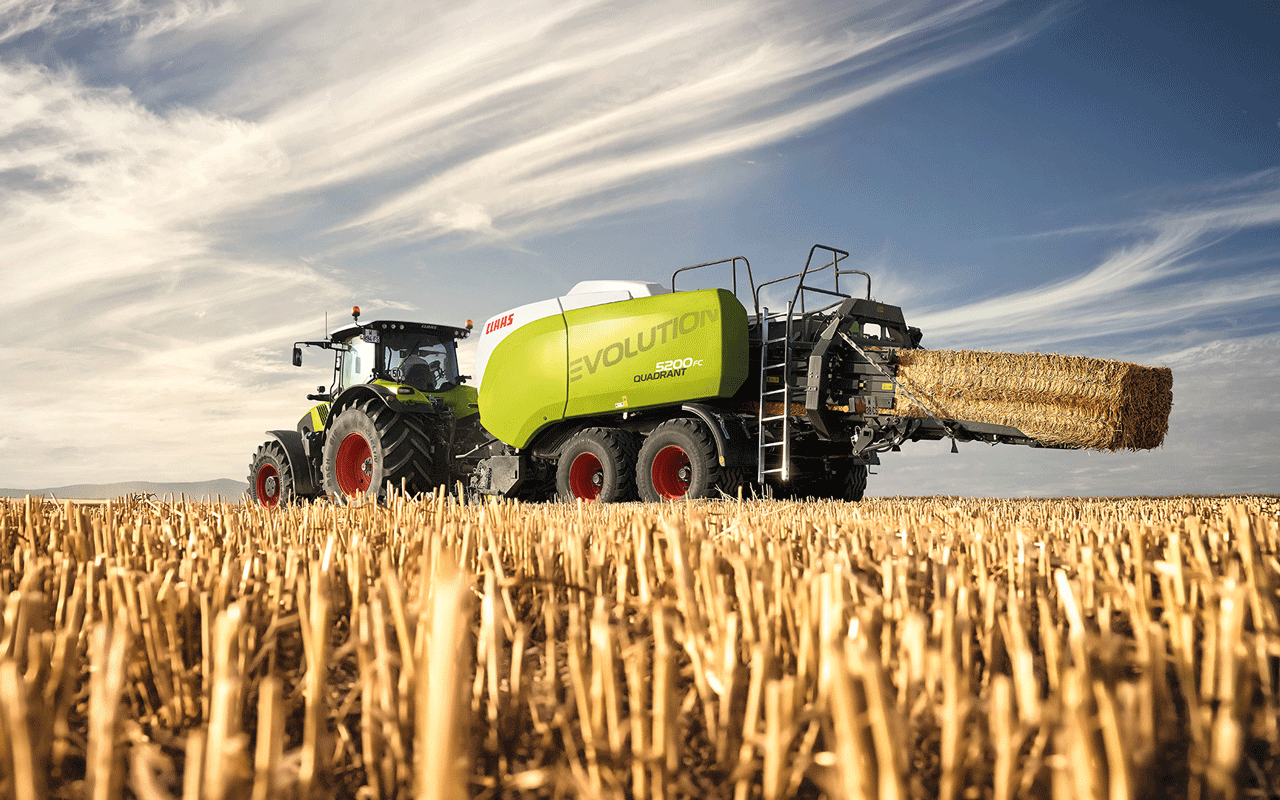
Claas
The most recent updates to the Quadrant Evolution 4200, 5200 and 5300 range of balers include a new design of flywheel plus the option of a hydraulic drive to the pick-up and the Power Feeding System.
To cushion load peaks, especially in irregular swaths, and protect the powertrain of the baler and tractor, the mass of the flywheel on the 5200 and 5300 has been increased.
This new design increases the inertia of the flywheel by 46% on the 5200 and 44% on the 5300 compared to previous versions. It’s also possible to add a slip clutch to further protect the driveline.
Optionally available on the Quadrant 5200 and 5300 is a hydraulic drive system for the pick-up and power feeding system (PFS).
The speed of the PFS feed roller can be independently adjusted from the pick-up from 200rpm to 250rpm depending on the operating conditions.
The increased maximum transmittable torque of the hydraulic drive of 1,000Nm is also fully available for reversing the pick-up and PFS at reduced speed.
Another new feature is the hydraulically fully automatic folding pick-up guide wheels. These swing out automatically when the pick-up is lowered and swing in fully automatically when it is raised.
The chamber incorporates strengthened side panels and top plate to ensure a better bale shape, and higher bale density is maintained.
The use of new HD ram bearings as a Claas UK standard, combined with the new pick-up with cam tracks on both sides and the simplified maintenance, help reduce costs.
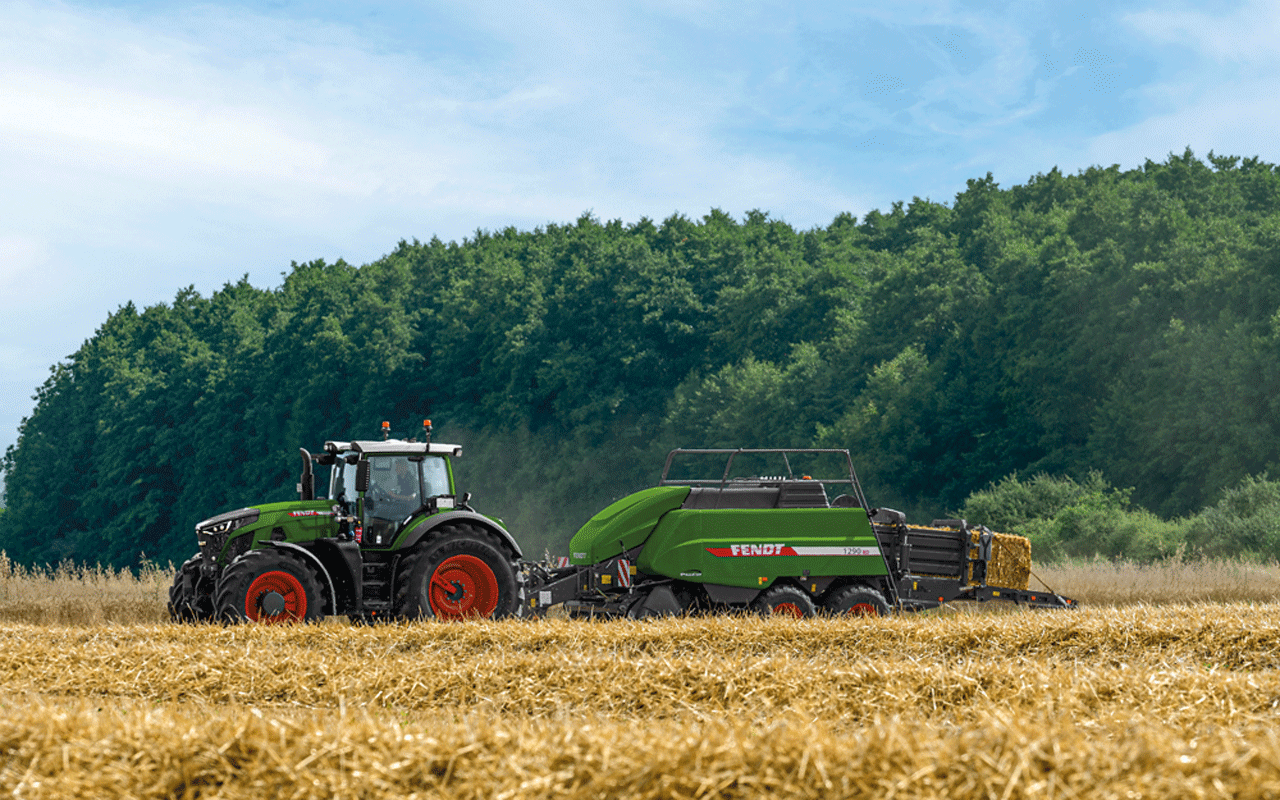
Fendt
Fendt offers 13 different Isobus-compatible models in the standard large square baler range. These differ by various chamber dimensions, packer or ProCut cutter configuration and the type of axle.
All square balers with tandem axle are equipped with a new suspension system and passive steering axle as standard. The design is said to increase manoeuvrability and avoids damage to the ground and turf.
Recent updates include an additional row of tines at the pick-up. Five rows of tines pick up the crop and help to increase the working speed of the baler. In addition, new plastic pick-up bands are standard. The smooth surface improves the quality of the bales and prevents the entry of contaminants into the baler.
To further improve the longevity of the balers, the bale chamber and pre-compression chamber have been revised.
The spring tension of the sensor flap in the pre-compression chamber can now be quickly and easily adjusted to the conditions by means of a lever, so the bales can always be perfectly formed.
Various functions have been integrated into the Fendt range, including tractor implement management, which adjusts the forward speed of the tractor based on a series of target parameters.
There’s also Bale Link, which uses a special twine with a radio frequency identification chip, which holds information including bale quality, moisture, the number of layers and the GPS position. This provides an added layer of transparency, so forage can be marketed based on quality.
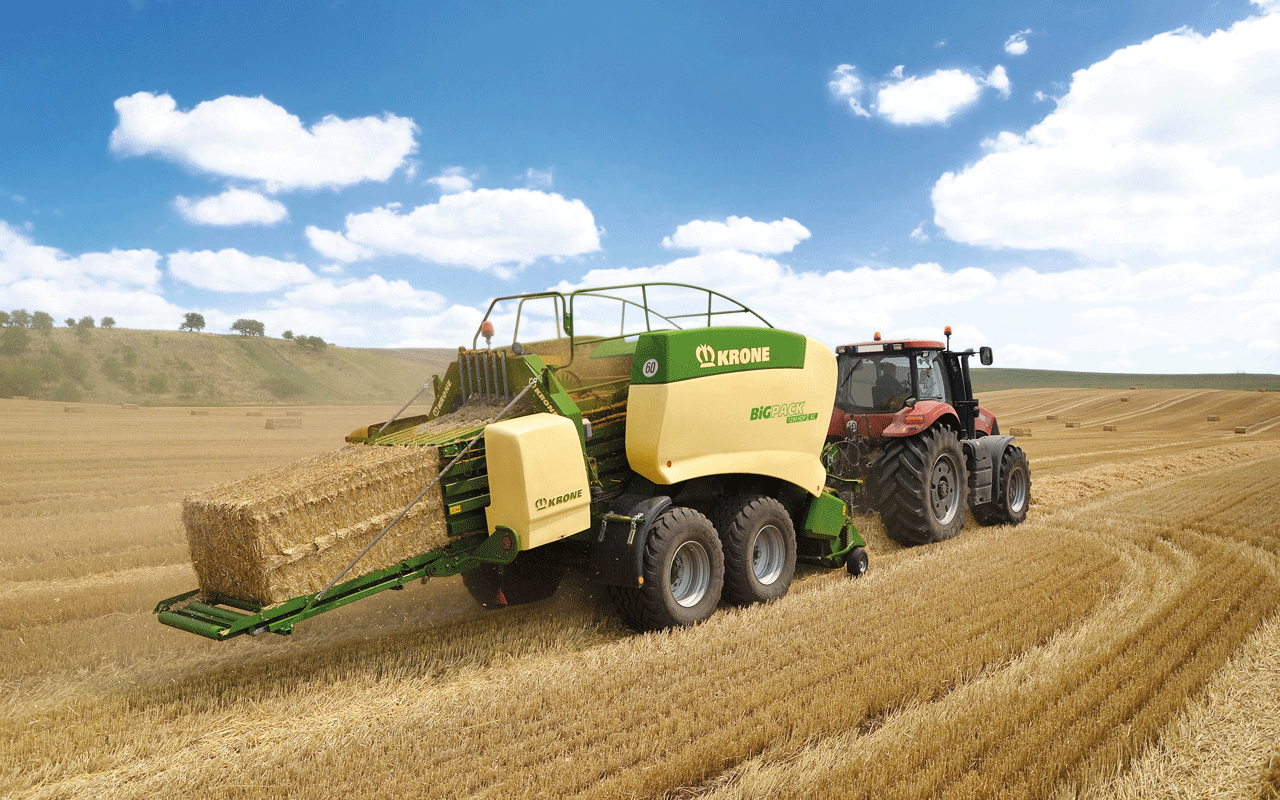
Krone
Krone says the BiG Pack balers excel in silage crops, thanks to their advanced cutting systems. There are two options available; the XCut (XC) which has 16 or 26 blades and a theoretical chop length of 44mm, or the VariCut (VC), which can be specified with up to 51 blades for a 22mm chop. On the VC, knives can be grouped into 51, 26, 25, 12, or five hydraulically from the cab.
The BiG Pack 1290 HDP II is said to offer up to 70% higher throughput, or a 10% increase in density than previous models, and features the V-Knotter system with eight patented double knotters that are said to eliminate offcuts.
This model sits at the top of the range with a 120x90cm bale chamber, and is only available with the XC system. The previous generation of 1290 HDP can be fitted with either XC or VC chopping units.
The 80×90 BiG Pack 890 is said to be ideal for heavy silage, fitted with the XC system, while the 870 HDP features the MultiBale system, which combines nine smaller bales. The 4×4 has 120x130cm chamber, said to be perfect for lighter grass crops such as hay, while the 1270 is available with either chopping system and as a MultiBale unit.
Krone highlights its variable filling system, which collects the crop in a pre-chamber. Once the pre-chamber reaches optimal density, the crop is transferred to the main baling chamber. This controlled feeding process gives a consistent bale shape and density, even under varied conditions.

Kuhn Farm Machinery
Kuhn’s flagship SB 1290 iD large square baler features the company’s Twinpact twin-plunger design. The system is said to allow operators to produce high-density, uniform bales without increasing the load or strain on the machine and operator.
The design splits the plunger into upper and lower sections connected via a triangle rod. The two sections compact the bale in series during a complete plunger cycle, with greater force applied per surface area, while avoiding peak loads. The result is 25% higher bale densities in dry crops.
A further key feature for high-density baling is the Power Density system – a single feeder fork designed to keep the pre-chamber consistently full. The feeder fork distributes the material evenly into the pre-chamber and moves the flake into the bale chamber when complete.
Kuhn’s Power Feed Roller actively follows the height of the swath to result in an even compressed feed when entering the intake rotor. This avoids peak loads on the baler caused by gaps or lumps in the swathe and results in less strain on the intake system and reduced power requirements.
Wrapped up
The company has three bale wrappers capable of wrapping both round and square bales. The SW 1114, SW 1614 and flagship SW 4014 can wrap different-sized bales with varying levels of technology and output.
The SW 4014 can wrap large and medium square bales, along with round bales, up to a maximum of 1,500kg/bale. Pre-set bale dimensions can be selected in the terminal and no mechanical adjustment is required to change bale size or shape.
The company highlights the Autoload system, allowing non-stop automatic loading, wrapping and unloading of bales. This uses a laser sensor to detect the bale position and length as it approaches. The loading arms then move into position and activate, depending on the driving speed, to load the bale in the centre of the rollers. Wrapping begins as the operator drives to the next bale.
The SW 4014 features Intelliwrap to control film overlap and layers to match crop conditions and storage. The operator can choose from four to nine wrap layers and the baler maintains efficient film placement regardless of the number of layers.
If five layers are required, the first three will overlap by 67% and the last two by 50%.
The SW 4014 is controlled through Isobus, either via a compatible tractor or Kuhn’s CCI 800 or 1200 monitors.
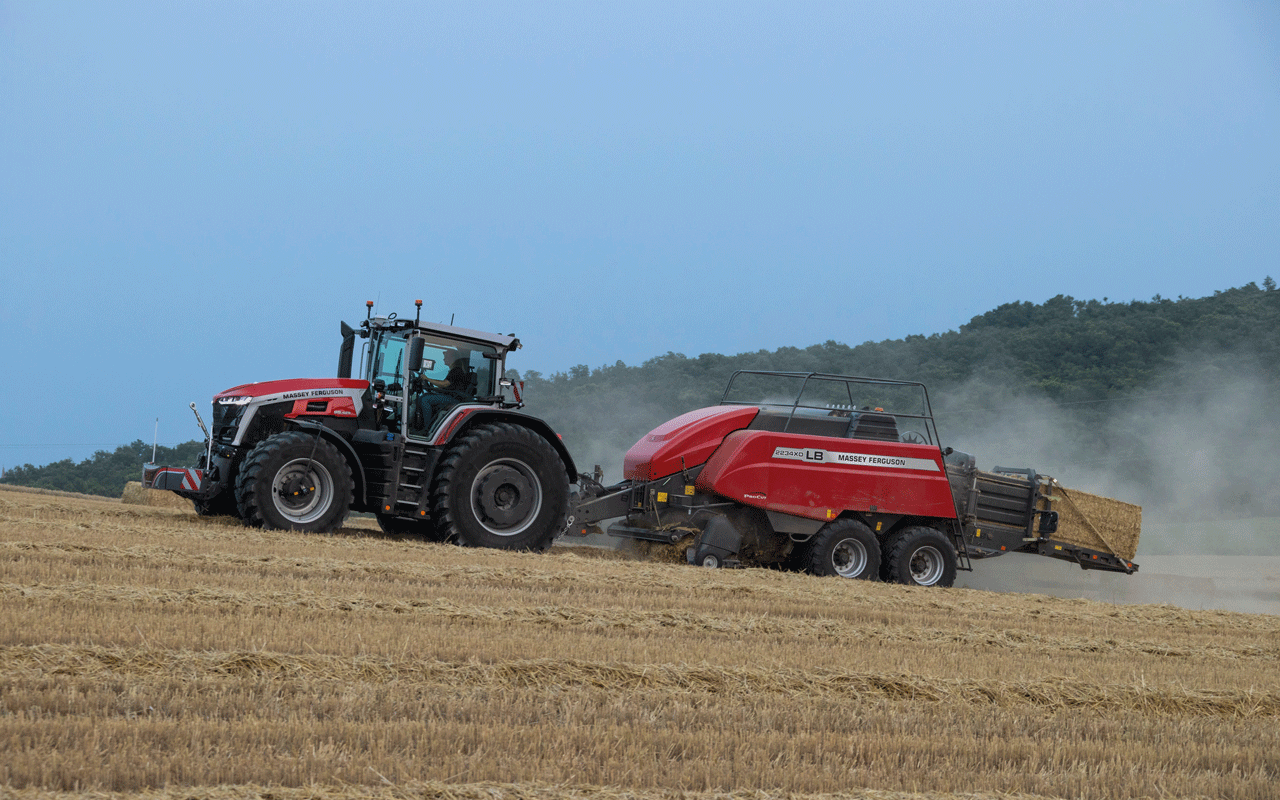
Massey Ferguson
There are five base models in the Massey Ferguson range, offering chamber sizes from 90x80cm up to 130x120cm. Each comes with an Isobus system, Bale Create, which enables operators to control each aspect of the machine, including bale length, density and even the lights and beacons.
Standard equipment also includes electronic bale length control, which can reportedly match the desired and true length of the bale to within half the average flake size.
At the front of the machine, the pick-up uses five tine bars, increasing the number of tines by 25%, which means each bar lifts a smaller amount of crop for a more consistent feed-in.
Various components have been uprated throughout the pick-up, packer and pre-compression chamber, with new bearings, polypropylene to minimise friction and easier adjustment of the pre-compression chamber springs.
A parabolic suspension system is fitted to the tandem axle, with passive rear steer and a hydraulic ram that can align the wheels without the operator having to move forward.
Each machine can be linked to Massey’s telemetry system, enabling owners to monitor performance remotely, while the operator can see how much twine has been used and how much remains with the optional twine monitoring system.
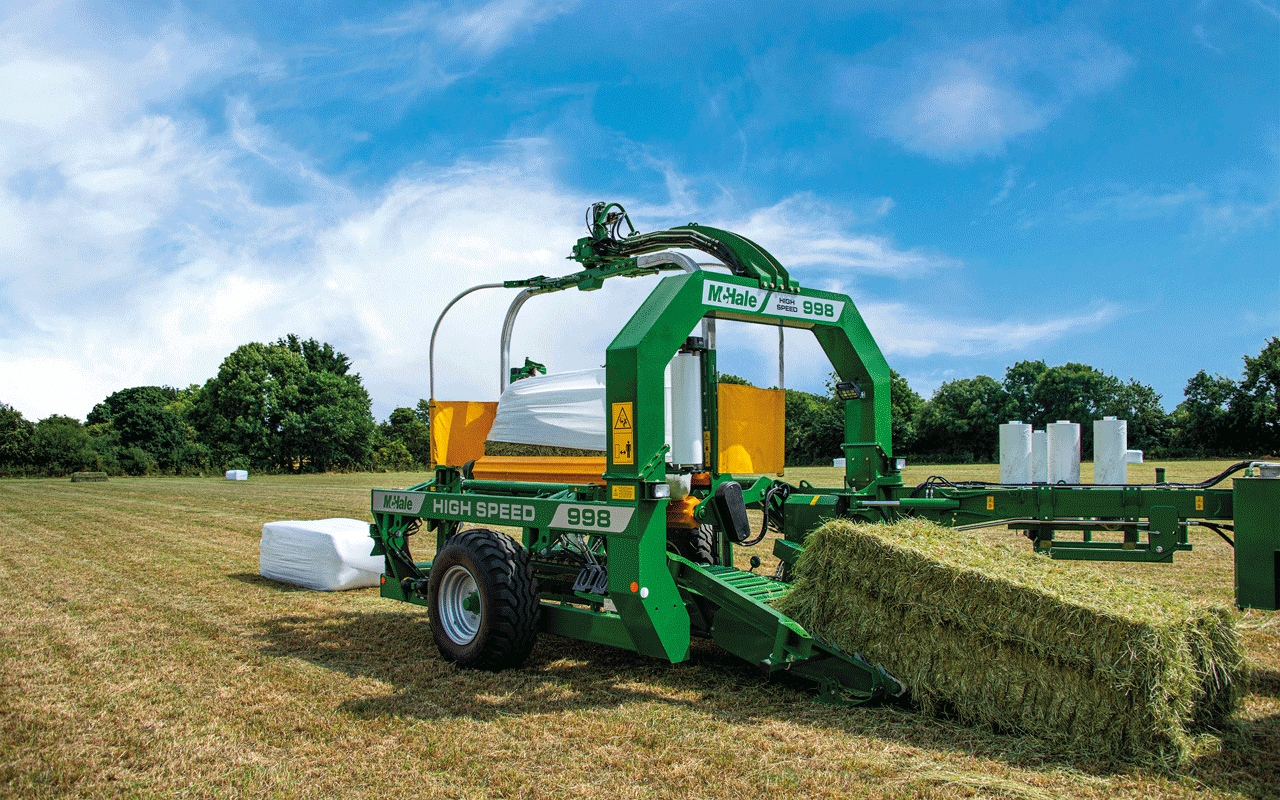
McHale
The McHale 998 High Speed square bale wrapper is a versatile solution for wrapping square bales. It is a high-capacity unit suitable for all sizes of square bales from 80x60cm to 160x120cm, including double bales.
It is fully automated, with all controls and adjustments available through the Expert Control Console in the tractor cab. From here, operators can run through the entire wrapping process at the touch of a button.
Using 2D laser sensors, the 998 High Speed can reportedly operate at approximately 40rpm. This can deliver up to 35% more output over a standard 998. It comes as standard with a fully integrated PTO-driven load-sensing hydraulic system.
The in-cab control unit enables the operator to change the bale size and select the desired number of film layers. The patented roller angles measuring system gives a consistent and even wrap regardless of bale size or shape and allows for extra care options.
The McHale 998 High Speed comes standard with two 750mm dispensing units. The units are designed so that the angle that they work at during the wrapping cycles stays constant. This gives a more even stretch through the roll of film.
The dispenser units also feature McHale’s quick-fit system to make film changing much more user friendly.
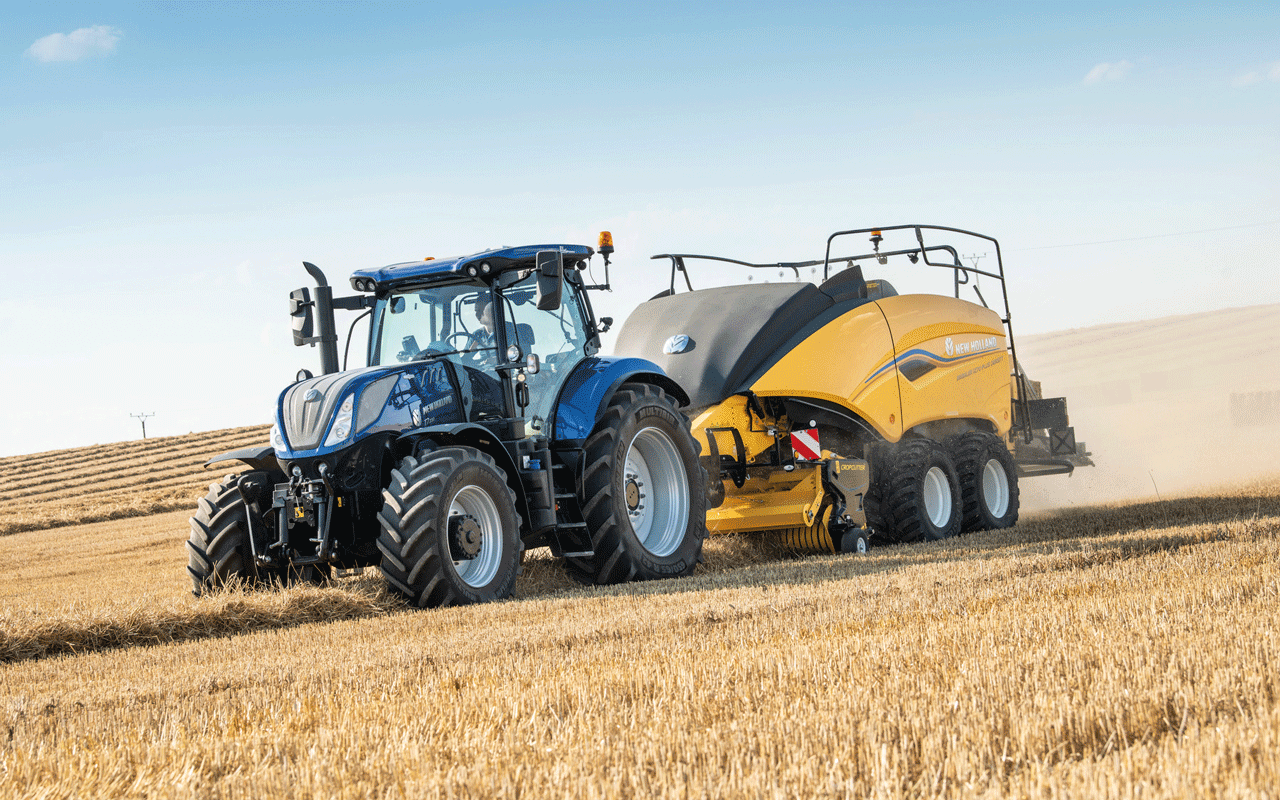
New Holland
Sitting at the top of the New Holland range, the BigBaler High Density produces 120x90cm bales with density levels said to be up to 22% higher than other conventional large square balers, and up to 15% more when compared to BigBaler Plus models.
To handle these densities, the units are manufactured with heavy-duty components to ensure durability and to match the baler’s high throughput, and features the company’s SmartShift gearbox, with two-speed start-up technology for smooth baler engagement while protecting the tractor’s driveline.
New Holland has also integrated the Intellisense bale automation system, which adjusts the tractor’s steering and speed control to ensure a full pick-up at all times.
The BigBaler Plus range has bales sizes ranging from 80x70cm to 120x90cm. These feature the SmartFill II bale direction sensing system to aid the operator with feeding in the crop in an even manner. It is also possible to monitor the density of completed bales from the cabin.
The full range includes the Patented Loop Master knotter system, unique to CNH, increasing overall bale tensile strength up to 26% for lower operating costs while eliminating twine offcut. This is important for silage bales to ensure twine doesn’t enter feed and is said to save up to 6km of twine in a 10,000-bale season.
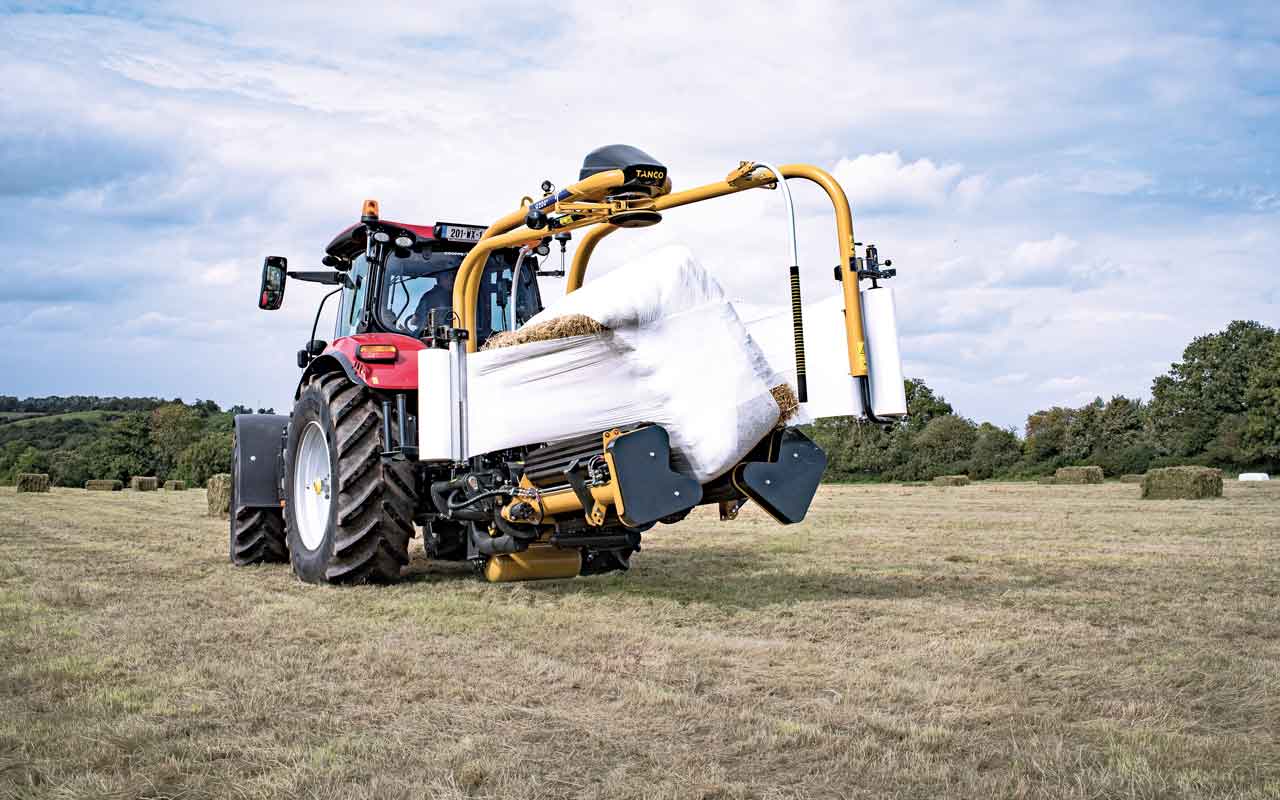
Tanco
Tanco claims to manufacture the most comprehensive range of bale wrappers on the market at its factory in Bagenalstown, County Carlow, Ireland, and distribute to over 40 countries worldwide.
The wrapper range consists of both conventional turntable and satellite-type machines, for round and square bales. In 2020, Tanco introduced the Q-series square and round bale wrapper, which replaced the 1540-EH, and just like the 1540-EH, the Q-series can be used either on a tractor’s front or rear linkage, or on a telehandler/loading shovel.
The Q-series is available with two or three plastic dispensers. There are several differences in the design and operation of the Q-series compared to its predecessor, implemented because of customer feedback.
The length of the bale rollers has been increased by 600mm, while proportional oil flow, indexed bale rotation, gear-driven satellites and adjustable bale roller width have been added to allow six-string bales to be handled easier, both singularly and in twin packs.
The Q-series can automatically load, wrap, level and unload the bale it wraps. For the 2024 season, satellite RPM monitoring was introduced. This reportedly eliminates the need for operator adjustment of machine speed settings due to oil flow fluctuations.


